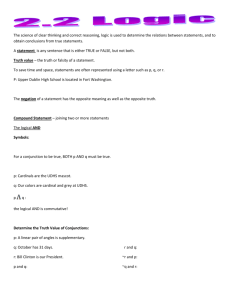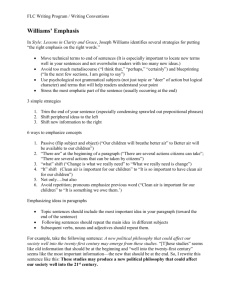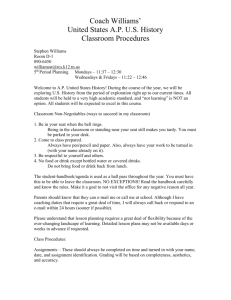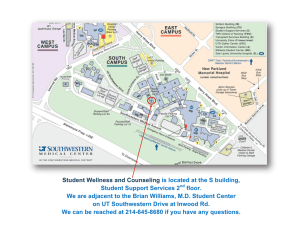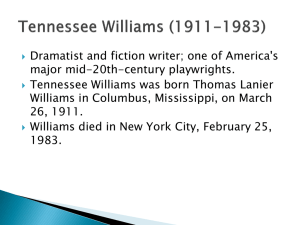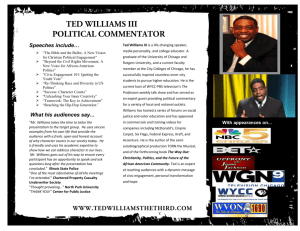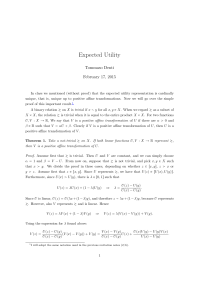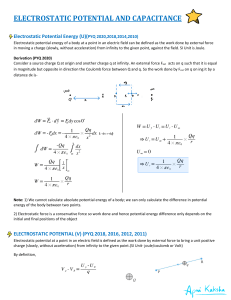Document 10540761
advertisement
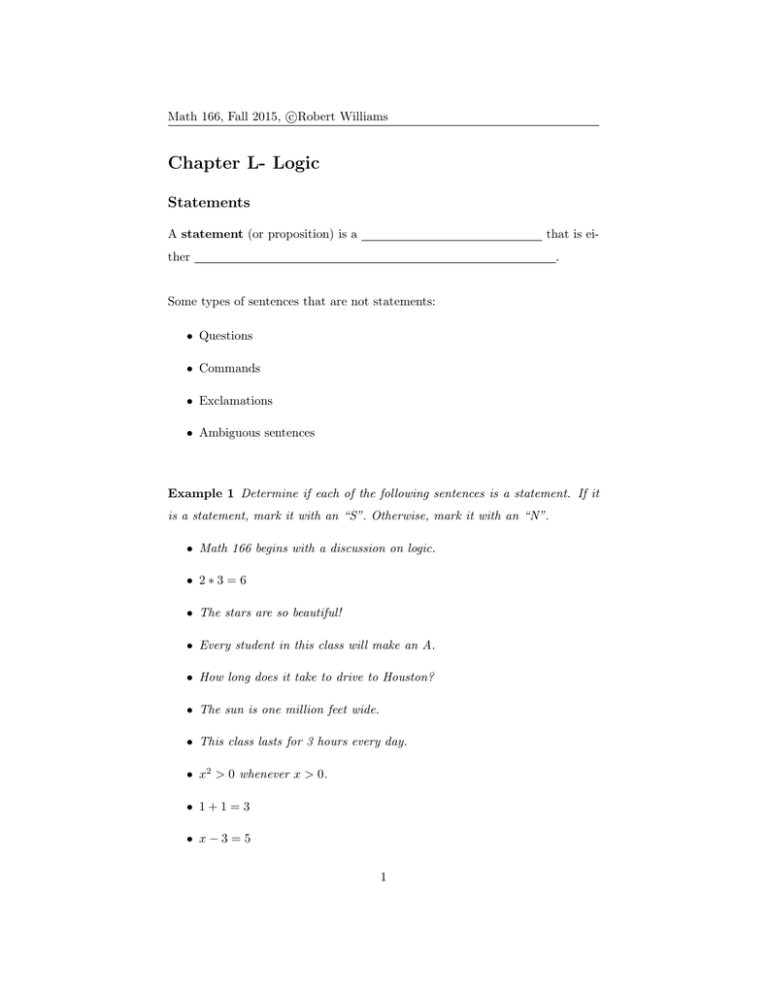
c Math 166, Fall 2015, Robert Williams Chapter L- Logic Statements A statement (or proposition) is a that is ei- ther . Some types of sentences that are not statements: • Questions • Commands • Exclamations • Ambiguous sentences Example 1 Determine if each of the following sentences is a statement. If it is a statement, mark it with an “S”. Otherwise, mark it with an “N”. • Math 166 begins with a discussion on logic. • 2∗3=6 • The stars are so beautiful! • Every student in this class will make an A. • How long does it take to drive to Houston? • The sun is one million feet wide. • This class lasts for 3 hours every day. • x2 > 0 whenever x > 0. • 1+1=3 • x−3=5 1 c Math 166, Fall 2015, Robert Williams A statement is called a simple statement if it expresses a single thought. We often use lower case letters (p, q, r, etc.) to represent simple statements. All of the statements in Example 1 are examples of simple statements. A compound statement is a statement that expresses multiple thoughts such as “I will eat a snack or have an early dinner.” Connectives and Truth Tables A connective is a word or words that are used to combine multiple simple statements into a single compound statement. We often want to deteremine whether or not a compound statement is true, that is to determine its truth value. A helpful aid in doing so is to construct a truth table where we list all possible combinations of truth values for our statement. We will focus on the following four types of connectives: A negation is a statement of the form “not p” and is written as ∼ p. The statement ∼ p is true when p ∼p T F A conjunction is a statement of the form “p and q” and is written as p ∧ q. The statement p ∧ q is true when p q T T T F F T F F p∧q 2 c Math 166, Fall 2015, Robert Williams A disjunction (sometimes called an inclusive disjunction) is a statement of the form “p or q” and is written as p ∨ q. The statement p ∨ q is true when p q T T T F F T F F p∨q An exclusive disjunction is a statement of the form “p or q, but not both” and is written as pYq. The statement pYq is true when p q T T T F F T F F pYq Important: In math, the word “or” is always the inclusive “or”. That is, it is always an inclusive disjunction. 3 c Math 166, Fall 2015, Robert Williams Example 2 Let p and q be the following statements: p: I woke up at 6:00 AM q: My first class was at 9:30 AM Write the following statements in symbolic form: 1. I woke up at 6:00 AM or my first class was at 9:30 AM 2. I woke up at 6:00 AM, and my first class is not at 9:30 AM 3. I did not wake up at 6:00 AM or my first class was not at 9:30 AM. Example 3 Let p, q, and r be the following statements: p: All students at A& M live in dorms. q: Everyone in this class owns a laptop. r: More students have cats than dogs. Write the following statements: 1. ∼ p 2. p Y r 3. ∼ p ∧ q 4. r∧ ∼ (p ∨ q) 4 c Math 166, Fall 2015, Robert Williams Example 4 Construct a truth table for the following compound propositions • ∼ p ∨ (p ∧ q) p q T T T F F T F F • ∼ (p ∧ q) ∨ (p Y q) p q T T T F F T F F • (p ∧ q) ∨ (p ∧ r) p q r T T T T T F T F T T F F F T T F T F F F T F F F 5 c Math 166, Fall 2015, Robert Williams • (∼ p ∨ q) ∧ (∼ q ∨ r) p q r T T T T T F T F T T F F F T T F T F F F T F F F A statement is called a contradiction if the truth value of the statement is False no matter what the truth values of its component simple statements are. A statement is a tautology if the truth value of the statement is True no matter what the truth value of its component simple statements are. Give an example of a contradcition: Give an example of a tautology: 6
